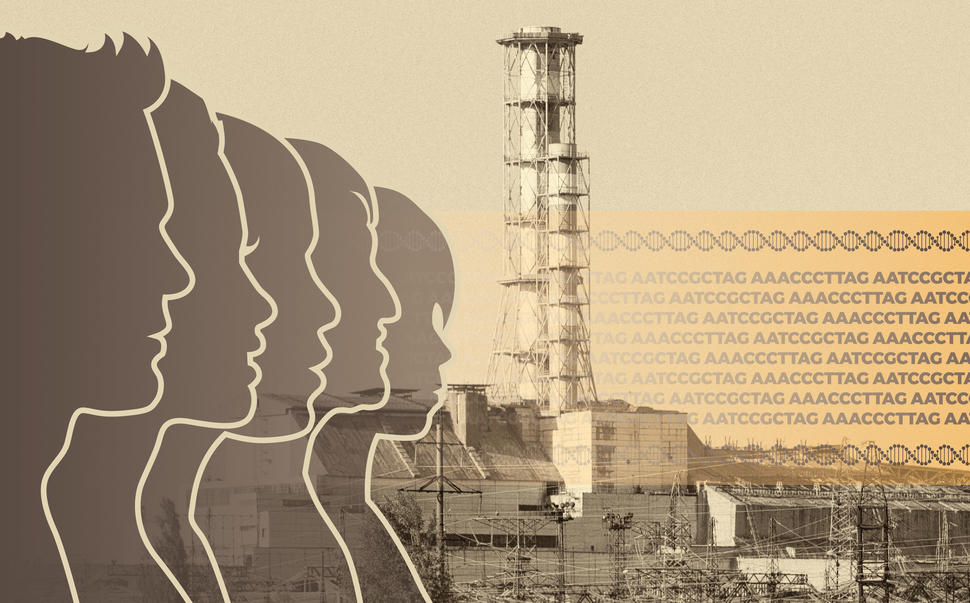Program Overview
Chornobyl Accident: Radiation and Health Effects
The screening program, which was carried out in the heavily contaminated northern regions of Ukraine (Kyiv, Chernihiv and Zhytomyr oblasts as well as Kyiv City), consisted of biennial examinations of the thyroid glands of approximately 13,000 individuals who were exposed as children (aged 0-17 years old) and who had thyroid radioactivity measurements made in the weeks following the accident. The screening protocol was designed to determine whether a participant had thyroid cancer or a range of other thyroid diseases, such as benign nodules.
The screening program consisted of the following: a medical history; palpation of the thyroid by an endocrinologist and an ultrasonographer; an ultrasound examination of the thyroid; and collection of a blood sample (for measurement of thyroid hormones and thyroid auto-antibodies) and a spot urine sample (to measure excreted iodine); as well as a detailed interview for estimating cumulative individual radiation dose to the thyroid gland that included a residential history, data on consumption of contaminated foods, and use of iodine prophylaxis. A study of those exposed to the accident while in utero (N=1494) and a comparison cohort of unexposed in utero subjects (N=1088) has been completed (Hatch et al., 2009).
The radioiodine doses estimated for each cohort member are based on the thyroid radioactivity measurements, ecologic data (for example, deposition patterns), and interview data on residential location and consumption of contaminated foods around the time of the accident. Fetal thyroid doses were derived from maternal doses (Likhtarev et al., in press).
The active screening program was completed in 2007/8. Follow-up of the cohort continues via linkage with the National Cancer Registry of Ukraine, (NCRU). The study center is located in Kyiv and includes the facilities of the Institute of Endocrinology and Metabolism, the Scientific Center for Radiation Medicine, Academy of Medical Sciences, the NCRU and the University of Illinois at Chicago, Kyiv Data Management Center.
Objectives
The primary objective of this collaborative research is to determine the relationship between I-131 exposure from the Chornobyl accident and risk of thyroid cancer. The effect of dose level, age at the time of exposure and sex are of particular interest, with effects of stable iodine also being considered. Associations between I-131 and benign thyroid nodules and other thyroid diseases have also been evaluated. The effects of I-131 in inducing thyroid cancer are being compared with published data on external radiation to assess their relative potency.
Progress to Date
1st Screening Cycle
The initial enrollment in the first round of screening was 13,243. To insure a high level of participation, the screening examinations were conducted both at the stationary center in Kyiv (28%) and in mobile units (72%) that were sent out to parts of the study area some distance from Kyiv. The first cycle was completed in 2001. Forty-five cancers were diagnosed as a result of the first round of screening.
Results of the analysis of radiation dose-response in relation to the prevalent cancers from the first round of screening in Ukraine (excess odds ratio per Gray (EOR/GY) of 5.25; 95% confidence interval (CI): 1.7, 27.5) were published in JNCI (2006, vol. 98 (13):897-903).
2nd - 4th Cycles
Sixty-five incident cancers were identified in the 2nd-4th cycles. The analysis of the dose-response relationship for incident thyroid cancers yielded an excess relative risk per Gray (ERR/Gy) two decades after exposure of 1.91 (95% CI: 0.43, 6.34 (Brenner et al., 2011).
Current research opportunities include a variety of projects concerning incidence of the many benign thyroid diseases identified in the study cohort, as well as genetic projects (gene expression, analysis of candidate SNPs) utilizing tissue samples archived in the Chornobyl Tissue Bank and blood samples collected from study subjects. Clinical follow-up of subjects with nodules detected during active screening is also underway.
Benefits to Ukrainians
One benefit to Ukrainians has been the long-term screening and evaluation of the population at risk that may reduce problems and increase survival by detecting thyroid disease early when treatment is most effective. The project has also assisted local health officials in developing appropriate health-care programs by providing pertinent, valuable data on a range of topics, including iodine nutrition. Technical and scientific training has been provided to collaborators and the general population has been educated on the importance of early detection and regular screening in preventing morbidity and death from thyroid cancer. Our published findings have contributed to the data base that health care providers, health policy and nuclear safety experts will draw upon to formulate future plans for similar exposure situations. In addition, the results are contributing to a basic understanding of the carcinogenic and other adverse health effects of I-131.
Roles of United States Participants
- The NCI staff is charged with scientific direction and management of the projects.
- The Thyroid Advisory Group, comprised of experts in all relevant areas, provides external oversight. The Group reviews the progress of each arm of the thyroid studies at least once per year. A Report including in-depth observations and recommendations is sent to the Director of the Division of Cancer Epidemiology and Genetics, NCI, as well as to the directors of our collaborating Ukrainian and Belarusian institutions.
